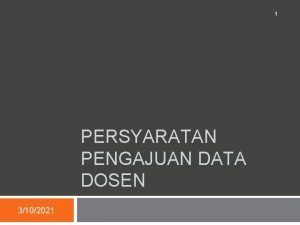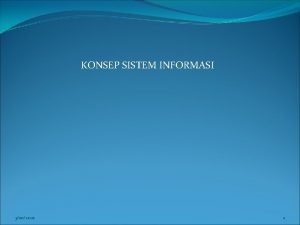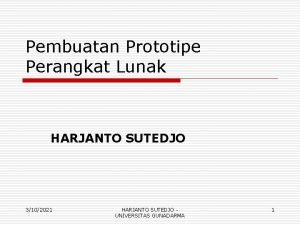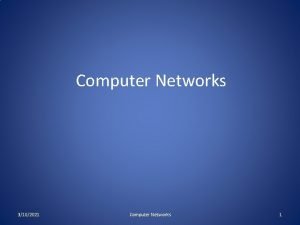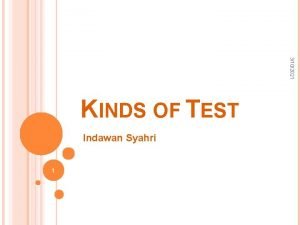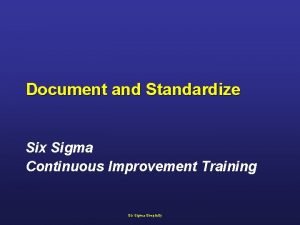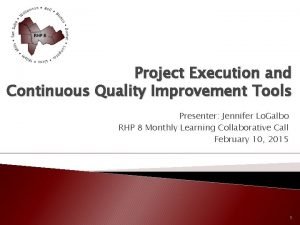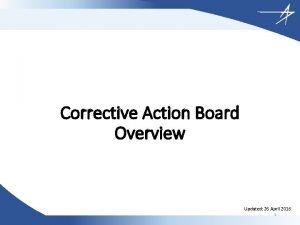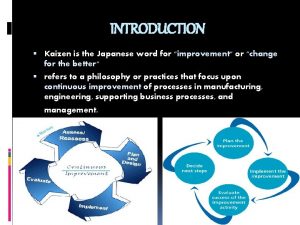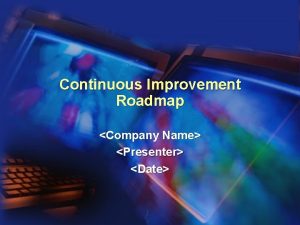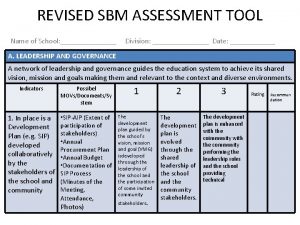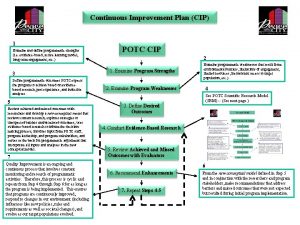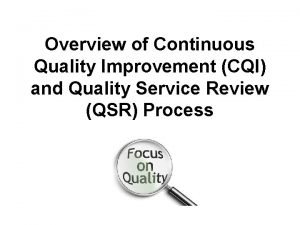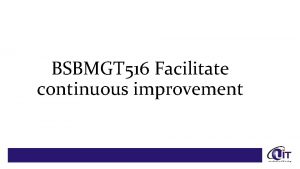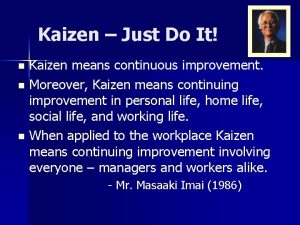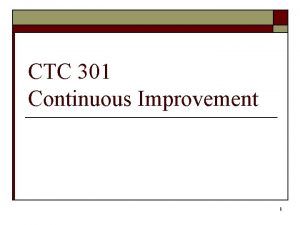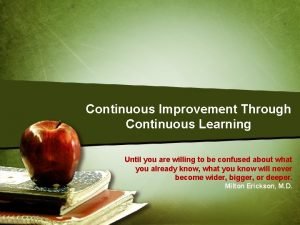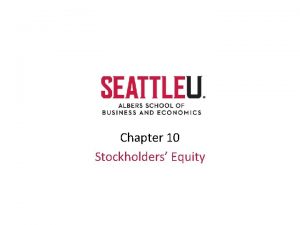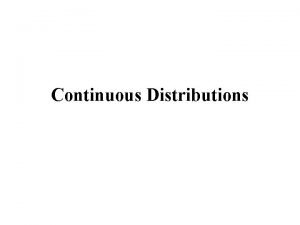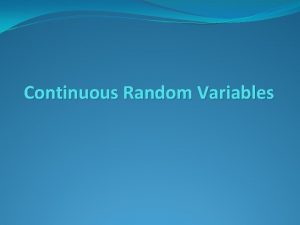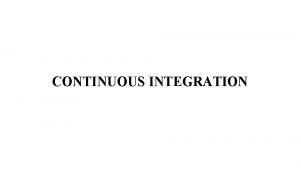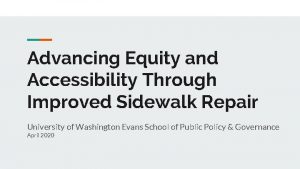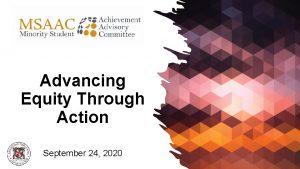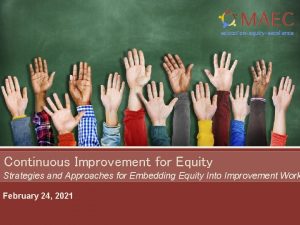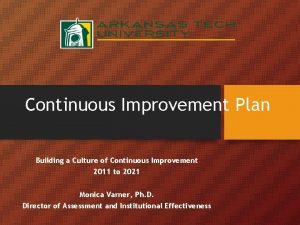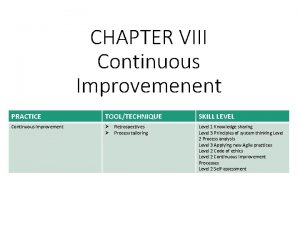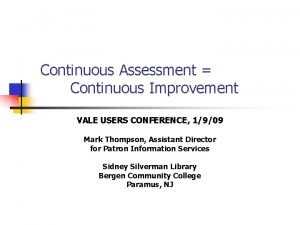Advancing Equity in PA through Continuous Improvement 3102021





















- Slides: 21

Advancing Equity in PA through Continuous Improvement 3/10/2021 1

Discussion topics • Designing a system fit for PA’s context • Establishing a common vision • Building capacity at every level 3/10/2021 2

Designing a system fit for PA’s context 3/10/2021 3

Pennsylvania’s K-12 education landscape • K-12 education system serves more than 1. 7 million students – 500 school districts, ranging in size from 200 to more than 140, 000 students – 160 brick-and-mortar charter schools and 14 cyber charter schools, responsible for educating 135, 000 students 3/10/2021 4

Pennsylvania’s K-12 education landscape • 60 percent of districts serve fewer than 2500 students Pennsylvania School Districts by Student Enrollment Number of Districts 350 300 296 250 200 136 150 100 50 37 89 14 17 7500 -9999 10, 000+ 0 < 2500 <1000 2500 - 4999 5000 - 7499 Number of Enrolled Students 3/10/2021 5

Pennsylvania’s K-12 education landscape • 328 districts (66 percent) report a lean administrative structure (i. e. , the Superintendent serves as the direct supervisor of school leaders) 3/10/2021 6

Pennsylvania’s migrant population • Approximately 5, 363 (birth through out-ofschool) were served in SY 2017 -18 – 78% school-age; enrolled in 157 different school districts across the state (ranging from 1 to 1, 331 per district) – 80. 2% Temporary; 20. 1% Seasonal – 61 birth countries – 85% non-fluent in English 3/10/2021 7

Establishing a common vision for continuous improvement in PA 3/10/2021 8

Establishing a common purpose

Improvement through an equity lens 3/10/2021 10

Conditions impact needs and opportunities Image source: familyfutures. net 3/10/2021 11

Building capacity across the system 3/10/2021 12

Agreeing on the key levers Comprehensive Review Gaps in PA’s Prior School Improvement Initiatives • Superficial consideration of root causes • Literature review • Consultation • Local reflection • Limited collaboration between the SEA and LEAs • Lacked focus on human capital 3/10/2021 Key Levers for Improvement in PA • Engage stakeholders • Focus on Essential Practices • Establish coherence and collaboration – horizontally and vertically • Differentiate supports • Prioritize human capital systems 13

Fostering shared responsibility at every level 3/10/2021 14

Defining meaningful stakeholder engagement • Stakeholders: community members who are involved and invested in LEAs, schools, programs, and outcomes for students • Engagement: process of communicating to, learning from, and partnering with stakeholders • Meaningful: inclusive, clear, effective and ongoing in order to best support educational equity and excellence CCSSO & Partners for Each and Every Child. (2017). Meaningful local engagement under ESSA: A handbook for LEA and school leaders

Power of meaningful stakeholder engagement • Engaging stakeholders is not only required under the law but is a strong best practice to effectively improve schools. – Making decisions on education policy in an inclusive and transparent way leads to better decisions and encourages stakeholders to contribute and become partners in achieving the goals in the state and local community. – Communities will support improvement strategies that they help to develop. – Partnerships with a diversity of stakeholders, including parents, philanthropy, community-based organizations, and others will build local capacity to implement innovative and ambitious strategies for meeting the needs of all students. Meaningful local engagement under ESSA: A handbook for LEA and school leaders 3/10/2021 16

Stakeholder groups to engage Think about the student group(s) of focus. Who would you engage? – Students (current and alumni) – Parents/guardians, families, and communities – District-level educators – School-level educators (including support staff) – Early learning leaders – Libraries – Elected officials – Agencies and governmental bodies – Advocacy organizations – Civil/human rights organizations – Faith-based organizations – Community food banks – Local employers – Refugee resettlement agencies Meaningful local engagement under ESSA: A handbook for LEA and school leaders 3/10/2021 17

Shifting from compliance to effective process DOCUMENT Layland, A. & Corbett, J. (2017). Utilizing Integrated Resources to Implement the School and District Improvement Cycle and Supports.

Focusing on ‘quality improvement’ 3/10/2021 19

Building SEA Capacity ision for V e h t p t Develo ovemen r p m I s ou Continu ems to t s y S h Establis Implement ely Effectiv rogress P r o t i n and Mo 3/10/2021 entation m e l p m an I nd Develop lear Targets a h. C Plan wit trategies S e Advanc o t y t i c pa s Build Ca for Continuou on the Visi ment Improve th hips Wi s n o i t a l e Re ild Cultivat eholders to Bu k entum Key Sta m o M n i ta and Sus 20

Contact/Mission For more information on continuous improvement initiatives in PA, please visit PDE’s website at www. education. pa. gov The mission of the Department of Education is to ensure that every learner has access to a worldclass education system that academically prepares children and adults to succeed as productive citizens. Further, the Department seeks to establish a culture that is committed to improving opportunities throughout the commonwealth by ensuring that technical support, resources, and optimal learning environments are available for all students, whether children or adults. 3/10/2021 21
 3102021
3102021 3102021
3102021 3102021
3102021 Prototipe evolusioner
Prototipe evolusioner 3102021
3102021 3102021
3102021 3102021
3102021 3102021
3102021 1 inch
1 inch Past simple future
Past simple future Present continuous or future continuous
Present continuous or future continuous Continuous improvement documentation
Continuous improvement documentation Define continuous quality improvement
Define continuous quality improvement Corrective action board
Corrective action board Japanese word for improvement
Japanese word for improvement Continuous improvement roadmap
Continuous improvement roadmap Egra arata assessment tool
Egra arata assessment tool Cip 1
Cip 1 Define continuous quality improvement
Define continuous quality improvement Bsbmgt516 facilitate continuous improvement
Bsbmgt516 facilitate continuous improvement Jrotc bravo company mottos
Jrotc bravo company mottos Just do it kaizen
Just do it kaizen
